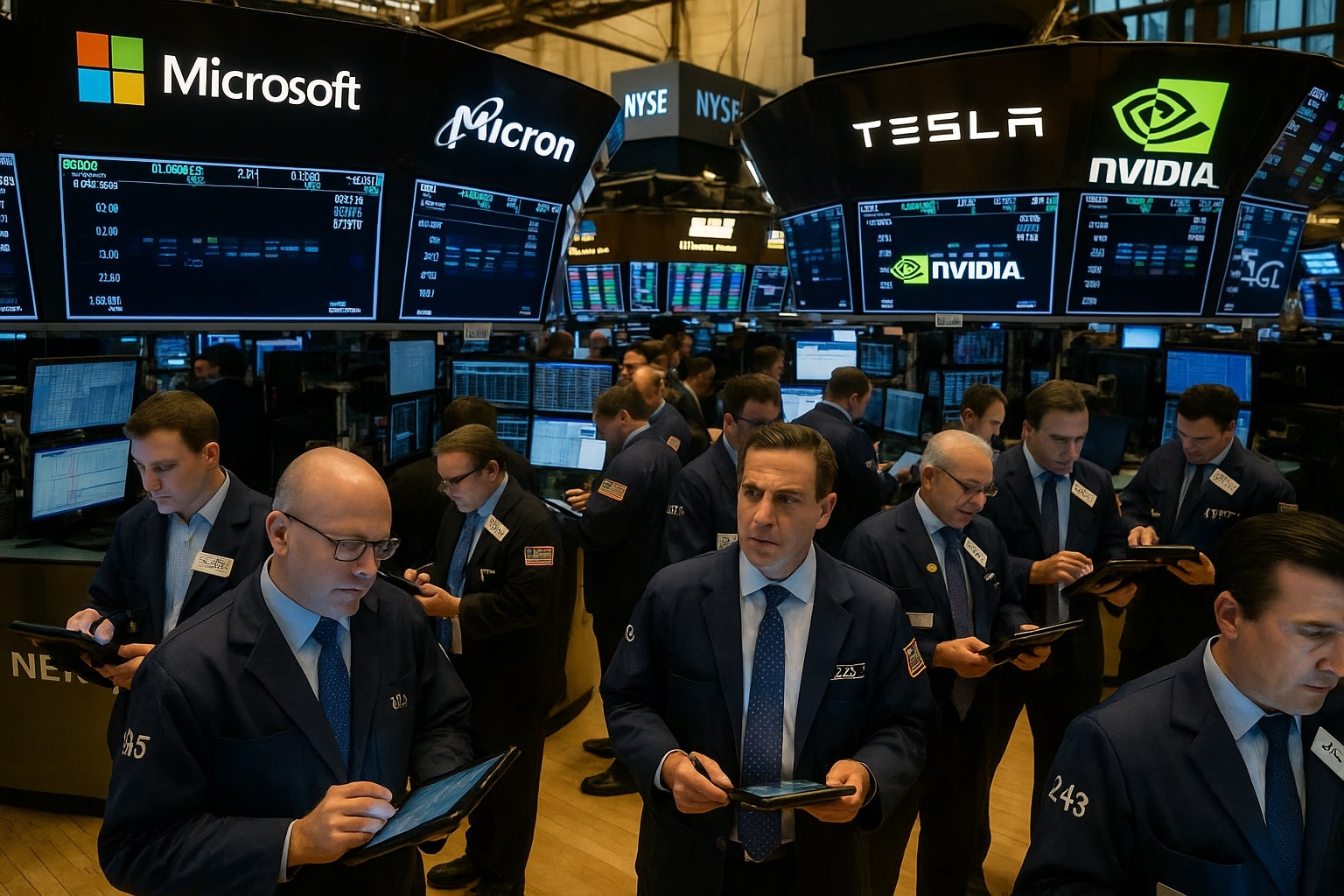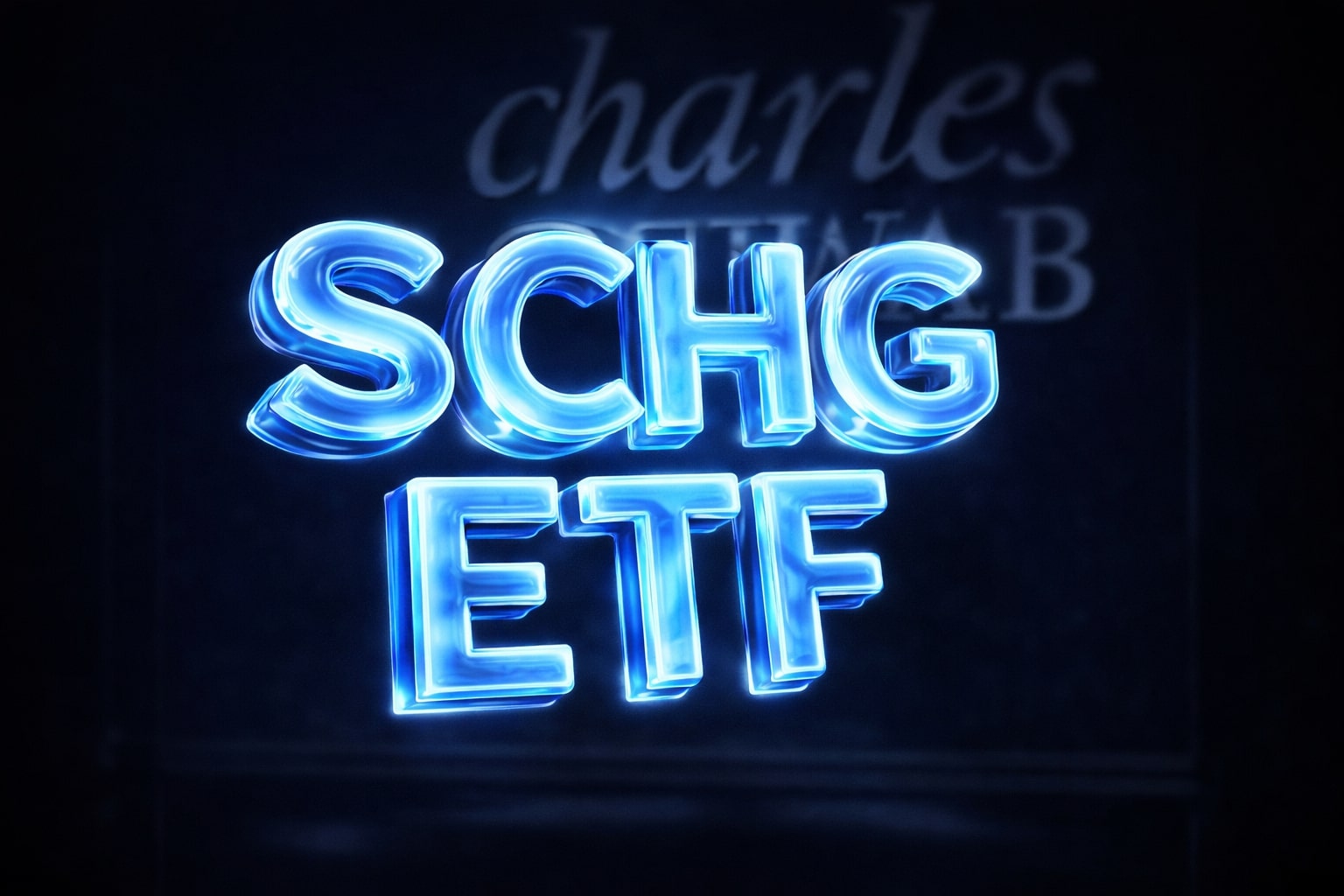
Stock Market Weekly Recap - Nasdaq Soars to Record 22,141 as Dow Slips, S&P 500 Holds 6,584 Before Fed
Tesla, Micron, Nvidia, and Microsoft lift Nasdaq while consumer sentiment weakens and Dow retreats from highs. Fed rate cut now nearly certain | That's TRadingNEWS
Nasdaq Extends Record Streak With Tech at the Helm
The Nasdaq Composite (IXIC) closed the week at 22,141.10, advancing 0.44% on Friday and delivering a 2% gain across five sessions. The index registered five straight record closes, cementing its leadership in a market defined by AI enthusiasm and lower-rate expectations. Tesla (NASDAQ:TSLA) surged 7.36% to finish at $395.94, adding nearly 12% in one week, fueled by hopes that cheaper financing will revive vehicle demand. Micron Technology (NASDAQ:MU) powered higher to $157.63, after touching a record $158.28, as analysts raised price targets to $175 on stronger DRAM demand tied to AI workloads. Nvidia (NASDAQ:NVDA) edged up to $177.82, consolidating near record territory, while Super Micro Computer (NASDAQ:SMCI) rose 2.39% after confirming volume shipments of its Nvidia Blackwell Ultra servers. Tech remains the cornerstone of Nasdaq’s outperformance as investors continue to chase hardware and software beneficiaries of AI infrastructure spending.
S&P 500 Pulls Back Slightly After Fresh Intraday High
The S&P 500 (US500) slipped 0.05% to 6,584.29, despite briefly hitting an intraday record at 6,594.67. Weekly performance remained strong, with a 1.6% gain—the best stretch since early August—marking five positive weeks in the last six. Adobe (NASDAQ:ADBE) lifted the index with a near 4% climb after raising full-year guidance, reporting $5.31 EPS on $5.99 billion in revenue, ahead of expectations. Microsoft (NASDAQ:MSFT) added 1.77% to $509.90 after extending its OpenAI partnership, while Apple (NASDAQ:AAPL) gained 1.76% to $234.07 as anticipation builds for the iPhone 16 cycle. Offsetting those moves, RH (NYSE:RH) tumbled 4.6% to $217.62 after missing revenue estimates at $899 million and cutting guidance, citing a $30 million tariff hit in the second half. Management warned that inflationary pressures will accelerate into 2026, underscoring fragility in consumer spending.
Dow Jones Retreats From Milestone
The Dow Jones Industrial Average (DJI) fell 273.78 points or 0.59% to close at 45,834.22, slipping back under the 46,000 level it had topped on Thursday for the first time in history. The index still secured a 1.56% weekly gain—its first positive result in three weeks. Losses were concentrated in Oracle (NYSE:ORCL), down 5.09% to $292.18 after investor disappointment in its AI growth outlook. Despite the pullback, heavyweight gains in Microsoft (MSFT) and Apple (AAPL) earlier in the week helped cushion declines, while Bank of America (NYSE:BAC) found support amid mid-week stability in yields. The Dow continues to show more vulnerability to cyclical consumer and industrial pressures than its technology-heavy peers.
Read More
-
SCHG ETF Near $33 High As AI Giants Drive 19% 2025 Rally
01.01.2026 · TradingNEWS ArchiveStocks
-
XRP-USD Stuck At $1.87 As XRPI Near $10.57 And XRPR Around $14.98 Despite $1.16B ETF Wave
01.01.2026 · TradingNEWS ArchiveCrypto
-
Natural Gas Price Forecast - NG=F Slides Toward Key $3.57 Support As Ng=F Extends 33% Drop
01.01.2026 · TradingNEWS ArchiveCommodities
-
USD/JPY Price Forecast - Yen Near 156 As Fed Cuts Meet Boj Hawkish Turn
01.01.2026 · TradingNEWS ArchiveForex
Fed Expectations Anchor Market Sentiment
Markets are locked on the Federal Reserve’s September 16–17 meeting, with futures implying a 97% probability of a 25 bp rate cut and marginal odds of a 50 bp move. The 10-year Treasury yield (US10YT=X) climbed 6 bps to 4.07%, reflecting lingering inflation concerns even as recessionary risks grow. Labor market data bolstered the dovish case, with weekly jobless claims hitting 263,000, the highest since 2021. The University of Michigan sentiment index fell to 55.4 from 58.2, missing expectations, while five-year inflation expectations rose to 3.9% from 3.5%. August CPI came in slightly hotter, suggesting tariffs are filtering through, but the Fed’s focus has shifted firmly toward employment deterioration. Investors expect multiple cuts through year-end, underpinning equity demand.
IPO Market Signals Risk Appetite Is Intact
The week featured robust new listings, led by Gemini Space Station (NASDAQ:GEMI), the crypto exchange founded by the Winklevoss twins. Shares priced at $28, opened at $37.01, surged as high as $40.71, and closed near $32, valuing the firm at $4.4 billion. The stock gained over 40% intraday at its peak, reflecting strong demand for digital asset exposure. Additional IPOs included Black Rock Coffee Bar, Via Transportation, and Legence, all receiving solid market attention. The Winklevoss brothers added to crypto fervor by forecasting Bitcoin (BTC-USD) could hit $1 million within a decade, keeping speculative sentiment alive alongside the equity rally.
Fund Flows and Commodities Underscore Caution
Despite U.S. equity records, LSEG Lipper data showed global equity funds registered $3.06 billion in outflows through September 10, the first in five weeks. U.S. funds lost $10.44 billion, offset by inflows of $3.77 billion in Europe and $1.87 billion in Asia. The divergence reflects profit-taking at U.S. highs and renewed appetite overseas. In commodities, gold (XAU/USD) surged to $3,690.40/oz, its highest settlement on record, as investors hedge against monetary and geopolitical risk. Oil extended gains after the U.K. imposed sanctions on Russian crude shipments, while the Dollar Index (DXY) closed stable at 97.54, leaving FX volatility muted ahead of the Fed.


















